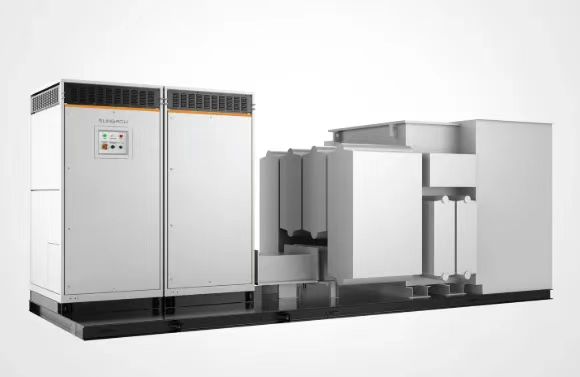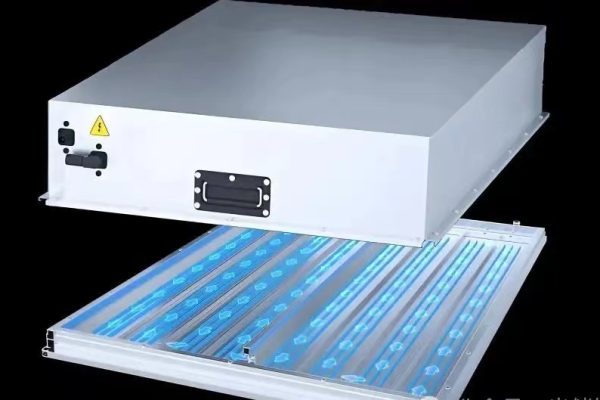What System Buyers Need to Know for Long-Term Value and Flexibility
Why “Future-Proofing” Matters in Small-Scale Solar + Storage
As a system buyer, distributor, or EPC working on 5–50kW solar + storage projects, you may ask:
“What happens if the site expands next year?”
“Will this inverter still work if we switch to lithium from lead-acid?”
“Can this unit support more batteries or smarter energy management later?”
These are future-proofing questions, and they matter — especially for small-scale projects with evolving needs.
Upgradable inverter platforms offer flexibility, adaptability, and longer project relevance — all without massive reinvestment.
1. What Is an “Upgradable Inverter Platform”?
An upgradable inverter platform is a hardware + firmware solution designed to support:
- Modular expansion (e.g., more PV strings, more battery capacity)
- Firmware-level updates (to add protocols, features, or grid code compliance)
- Flexible communication protocols (CAN, RS485, Modbus, Wi-Fi)
- Hybrid modes (grid-tied, off-grid, AC coupling)
Rather than being fixed-function, these inverters evolve with your system.
2. Common Future-Proofing Scenarios in Small Projects
| Scenario | Why It Happens | Impact |
|---|---|---|
| Battery tech changes | Moving from lead-acid to LFP/NMC | Need for BMS compatibility, new protocols |
| Load growth | Extra buildings, EV charger added | Inverter parallel/stacking capacity required |
| Grid policy changes | Local rules now require export limitation or reactive power support | Firmware upgrade or control logic change |
| Remote monitoring | Client asks for web portal or app | Need for Wi-Fi module or RS485 gateway |
| Microgrid formation | Small project joins neighboring systems | Requires sync support, anti-islanding, EMS link |
A rigid inverter becomes a barrier in these scenarios. A platform approach gives you options.
3. Key Features That Make an Inverter Platform Future-Proof
Here’s what to look for when choosing a scalable inverter platform:
a) Multiple Communication Protocols
- CAN for BMS communication with lithium packs
- RS485 / Modbus for EMS, smart meters, or SCADA
- Wi-Fi / Ethernet for cloud platforms
- ✅ Look for models that allow user-defined protocol libraries
b) Firmware Upgradability
- Via USB, SD card, or OTA (over-the-air)
- Enables new features (e.g., VPP support, new country grid code)
- Some suppliers provide field-deployable upgrades, critical for rural or hard-to-access sites
c) Parallel / Stackable Architecture
- Inverter supports 2–6 unit stacking
- Common in Deye, Victron, Growatt hybrid lines
- Future load growth doesn’t require system overhaul — just add a unit
d) Hybrid Operating Modes
- Grid-tied, off-grid, backup, AC coupling
- Ability to reconfigure the mode without replacing hardware
- Useful for guesthouses, farms, telecom stations with varying priorities
e) Battery Flexibility
- Compatible with multiple battery chemistries (LFP, NMC, GEL, AGM)
- Adjustable voltage windows, charge/discharge curves
- Open BMS protocol list = plug-and-play capability
4. Brands with Future-Proofing Strengths
| Brand | Notable Features | Application Fit |
|---|---|---|
| Deye | Parallel support, multi-battery BMS profiles, droop sync | Rural microgrids, project expansions |
| Victron | Modular, highly configurable, strong remote support | Advanced off-grid / marine / mobile setups |
| Growatt SPF | Affordable stackable units, basic battery compatibility | Residential and small business |
| Voltronic | Firmware tweaks via RS232/RS485, common OEM base | Low-cost flexibility with installer expertise |
Ask your supplier what model lifecycle and firmware roadmap they support.
5. Buyer Tips: How to Choose an Upgradable Inverter Platform
✅ Ask about firmware change logs before ordering – are updates frequent?
✅ Request the BMS compatibility list — is your battery included?
✅ Check parallel support — how many units can be stacked, and how is sync handled?
✅ Review installer manuals — does the inverter allow installer-level changes for future needs?
✅ Confirm grid code compliance roadmap — can this inverter adapt to changing interconnection rules?
6. Use Case Example: 10kW Resort PV + Battery Project
Year 1 Setup:
- Deye 10kW hybrid inverter
- 2×5kWh LFP batteries
- 10kW PV
- Wi-Fi monitoring
Year 3 Needs:
- Add 5kW of EV charging
- Add 5kWh more battery
- Local utility requires reactive power control
Results:
- Added one inverter in parallel
- Plugged in another battery with compatible BMS
- Upgraded firmware for reactive power logic
- No need to replace core system
Because the inverter platform was flexible, total re-investment was avoided.
7. Future Trends to Watch
- Virtual Power Plant (VPP) Integration
- Grid Forming Capabilities in Hybrid Inverters
- Multi-brand Battery Protocol Libraries
- Open-source or API-based remote control
- Built-in AI Diagnostics or Self-Test Modes
Choosing a future-proof platform now means your system can evolve with these trends — not become obsolete in 2 years.
Conclusion: Upgradability Is Not Just a Feature — It’s a Procurement Strategy
As a system buyer, your choices today determine how much control, cost efficiency, and continuity you retain tomorrow.
Future-proofing isn’t about spending more.
It’s about choosing a platform that grows with your project — and protects your investment.









